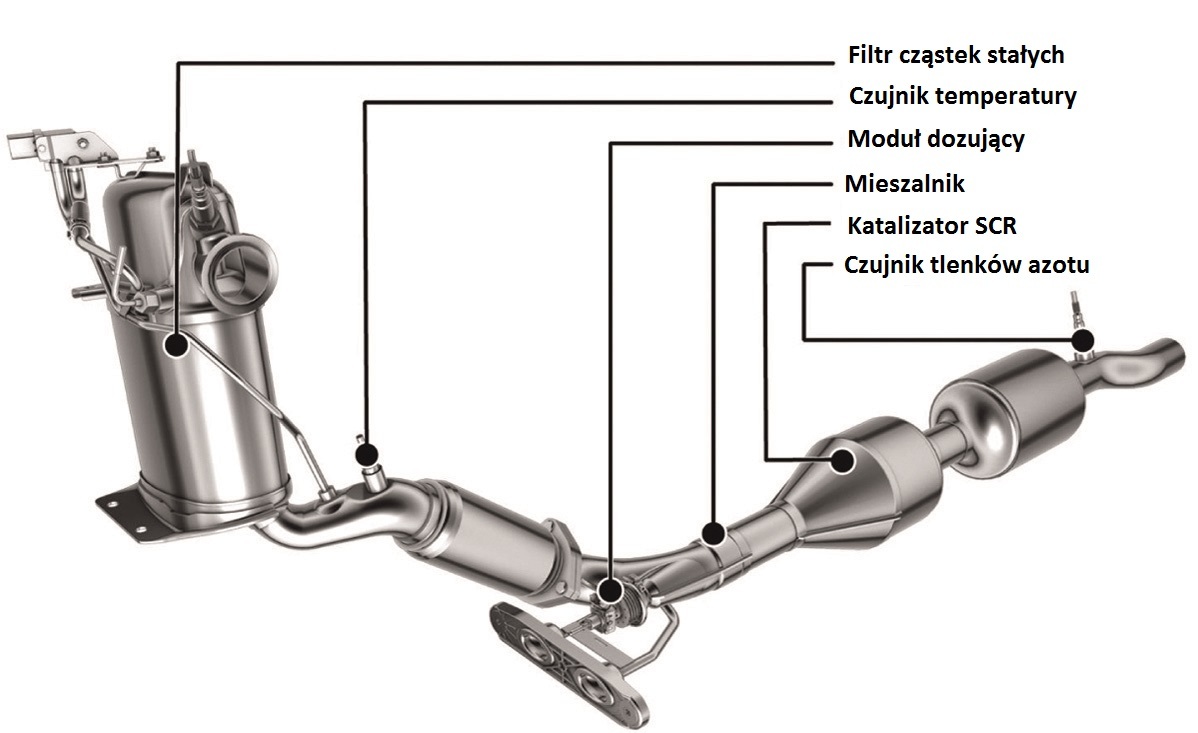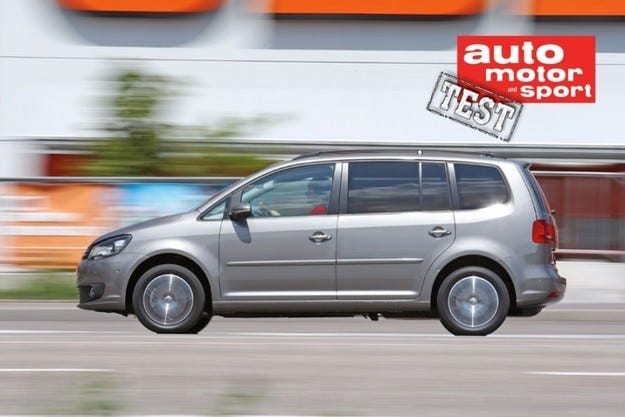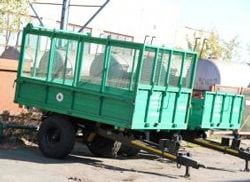
Diesels with SCR. Will they cause problems?
 Diesel engines have more and more accessories. A turbocharger, an aftercooler and a diesel particulate filter are already standard. Now there is an SCR filter.
Diesel engines have more and more accessories. A turbocharger, an aftercooler and a diesel particulate filter are already standard. Now there is an SCR filter.
BlueHDI, BlueTEC, SCR Blue Motion Technology are just some of the markings that have recently appeared on diesel vehicles. It is reported that the cars are equipped with the SCR (Selective Catalytic Reduction) system, i.e. have a special installation for the removal of nitrogen oxides from exhaust gases, in which the catalyst is ammonia introduced in the form of a liquid urea solution (AdBlue). . The system remains outside the engine, partly built into the body (electronic controller, sensors, tank, pump, AdBlue filling system, fluid supply lines to the nozzle) and partly into the exhaust system (fluid nozzle, catalytic module, nitrogen oxides). sensor). Data from the system is fed into the vehicle's diagnostic system, which allows the driver to receive information about the need to replenish fluid and possible failures of the SCR system.
The operation of the SCR is relatively simple. The injector introduces the urea solution into the exhaust system before the SCR catalyst. Under the influence of high temperature, the liquid decomposes into ammonia and carbon dioxide. In the catalyst, ammonia reacts with nitrogen oxides to form volatile nitrogen and water vapor. Part of the ammonia not used in the reaction is also converted to volatile nitrogen and water vapour. Direct application of ammonia is impossible due to its high toxicity and disgusting smell. Hence the aqueous solution of urea, safe and practically odorless, from which the ammonia is extracted only in the exhaust system just before the catalytic reaction.
New systems that reduce nitrogen oxides in exhaust gases replaced the previously used EGR systems, which were too inefficient for the Euro 6 standard introduced in 2014. However, not all Euro 6 engines need to have an SCR system. It is practically indispensable in larger drive units, the less a so-called "NOx trap" or storage catalyst will suffice. It is installed in the exhaust system and captures nitrogen oxides. When the sensor detects that the catalyst is full, it sends a signal to the engine control electronics. The latter, in turn, instructs the injectors to increase the dose of fuel at intervals of several seconds in order to burn the trapped oxides. The end products are nitrogen and carbon dioxide. Thus, a storage catalytic converter works similarly to a diesel particulate filter, but is not as efficient as an SCR catalytic converter, which can remove up to 90% of nitrogen oxides from exhaust gases. But the "NOx trap" does not require additional maintenance and the use of AdBlue, which can be quite a hassle.
The editors recommend:
Used BMW 3 Series e90 (2005 – 2012)
Will the traffic inspectorate, however, be abolished?
More benefits for drivers
Wholesale AdBlue is very cheap (PLN 2 per litre), but at the gas station it costs PLN 10-15 per liter. Still, this is a better price than at authorized service stations, where you usually have to pay 2-3 times more for it. It must be remembered that AdBlu is bought regularly, there can be no question of a stock that needs to be carried in the trunk. The liquid must be stored under appropriate conditions and not for too long. But a warehouse is not needed, since the consumption of a urea solution is small. It is approximately 5% of fuel consumption, i.e. for a car consuming 8 l/100 km of diesel fuel, approximately 0,4 l/100 km. At a distance of 1000 km it will be about 4 liters, which means a consumption of 40-60 zł.
It is easy to see that the purchase of AdBlue itself increases the cost of operating a car, although these can be reduced by lower fuel consumption in engines with an SCR catalytic converter. The first problems also appear, because without AdBlue in the car, you have to look for a point of sale for a urea solution immediately after the message about the need to refuel. When the fluid runs out, the engine will go into emergency mode. But the real problems, and more serious ones, lie elsewhere. In addition, the costs associated with an SCR system can be significantly higher. Here is a list of the deadly sins of the SCR system:
Low Temperature – AdBlue freezes at -11 ºC. When the engine is running, the heating system next to the AdBlue tank ensures that the liquid does not freeze and there is no problem. But when the car is started after a frosty night, AdBlue freezes. It is not possible to apply it to a running cold engine until the heating system has brought AdBlue to a liquid state and the controller has decided that dosing can begin. Finally, the urea solution is injected, but there are still urea crystals in the tank that can block the AdBlue injector and pump lines. When this happens, the engine will fail. The situation will not return to normal until all the urea is dissolved. But urea crystals do not dissolve easily before they are no longer crystalline, they can damage the AdBlue injector and pump. A new AdBlue injector costs at least a few hundred PLN, while a new pump (integrated with the tank) costs between 1700 and several thousand PLN. It should be added that low temperatures do not serve AdBlue. When freezing and thawing, the liquid degrades. After several such transformations, it is better to replace it with a new one.
Heat – at temperatures above 30 ºC, the urea in AdBlue condenses and decomposes into an organic substance called biuret. You may then smell an unpleasant smell of ammonia near the AdBlue tank. If the urea content is too low, the SCR catalytic converter cannot respond properly, and if the vehicle diagnostic alarm does not respond, the engine will go into emergency mode. An easy way to cool your AdBlue tank is to pour cold water over it.
Failures of mechanical and electrical components – if used properly, damage to the pump or failure of the AdBlue injector is rare. On the other hand, nitric oxide sensors fail relatively often. Unfortunately, sensors are often more expensive than injectors. They cost from a few hundred to almost 2000 zł.
Pollution – the AdBlue supply system does not tolerate any contamination, especially greasy. Even a small dose of it will damage the installation. Funnels and other accessories necessary for replenishing the urea solution must not be used for any other purpose. AdBlue must not be diluted with water, as this may damage the catalytic converter. AdBlue is a 32,5% solution of urea in water, this ratio must not be violated.
SCR systems have been installed on trucks since 2006, and on passenger cars since 2012. No one denies the need to use them, because the elimination of harmful substances in exhaust gases is a positive action for all of us. But over the years of use, SCR has made its worst notoriety, fueling customer workshops and annoying users. It is as troublesome as a particulate filter, and can expose car owners to nervous breakdowns and considerable expenses. No wonder the market reacted in the same way as to particulate filters. There are workshops that remove the AdBlue injection installation and install a special emulator that informs the car's diagnostic system that the filter is still in place and working properly. Also in this case, the moral side of such an action is very doubtful, but this is hardly surprising for drivers who have crawled deep under the skin of the SCR and penetrated into their wallet. The legal side leaves no doubt - the removal of the SCR filter is illegal, as it violates the conditions for the approval of the car. However, no one will try to detect such a practice, as in the case of removing particulate filters.

